What is Glass?
Glass is a non-crystalline, amorphous solid material that is often transparent and has widespread practical, technological, and decorative uses in everyday life. It is made by melting sand, soda ash, and limestone at high temperatures and then rapidly cooling the molten material to form a rigid structure.
Properties of Glass
- Transparency: Glass allows light to pass through it, making it transparent.
- Hardness: Glass is a relatively hard material, but it can also be brittle and prone to shattering under certain conditions.
- Chemical Inertia: Glass is resistant to chemical reactions, making it suitable for storing various substances.
- Malleability: Glass can be softened and shaped when heated, allowing it to be formed into various shapes and structures.
Types of Glass
There are several types of glass, each with its own unique properties and uses:
- Soda-lime glass: This is the most common type of glass used in windows, bottles, and glassware.
- Borosilicate glass: Known for its resistance to thermal shock, it is often used in laboratory equipment and kitchenware.
- Tempered glass: This type of glass is strengthened through a thermal or chemical treatment, making it more resistant to breakage.
- Float glass: A highly transparent glass used in windows, mirrors, and architectural applications.
Uses of Glass
Glass has a wide range of practical uses, including:
- Windows and doors
- Bottles and containers
- Tableware and kitchenware
- Construction materials
- Optical lenses and prisms
- Electronic devices
Study Guide
Here are some questions to help you study the topic of glass:
- What are the main ingredients used to make glass?
- What are the properties of glass?
- What are the different types of glass and their uses?
- How is glass made into different shapes and structures?
- What are the practical uses of glass in everyday life?
Understanding the properties, types, and uses of glass can help you appreciate its importance in various industries and applications.
.◂Science Worksheets and Study Guides Second Grade. The sun and earth
Study Guide The sun and earth
The sun and earth  Activity Lesson
Activity Lesson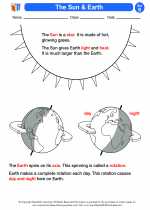 The Sun & Earth
The Sun & Earth  Worksheet/Answer key
Worksheet/Answer key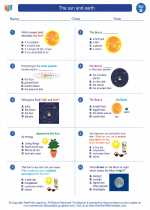 The sun and earth
The sun and earth  Worksheet/Answer key
Worksheet/Answer key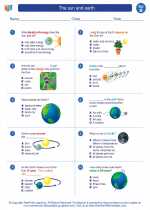 The sun and earth
The sun and earth  Worksheet/Answer key
Worksheet/Answer key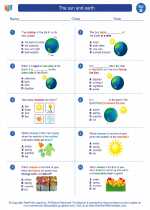 The sun and earth
The sun and earth  Worksheet/Answer key
Worksheet/Answer key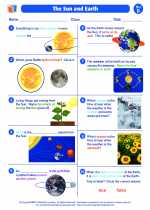 The Sun and Earth
The Sun and Earth  Vocabulary/Answer key
Vocabulary/Answer key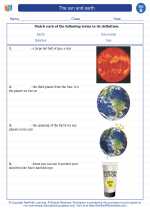 The sun and earth
The sun and earth 

 Activity Lesson
Activity Lesson
 Worksheet/Answer key
Worksheet/Answer key
 Worksheet/Answer key
Worksheet/Answer key
 Worksheet/Answer key
Worksheet/Answer key
 Worksheet/Answer key
Worksheet/Answer key
 Vocabulary/Answer key
Vocabulary/Answer key

The resources above cover the following skills:
Concepts of Earth Science: A student should understand and be able to apply the concepts, processes, theories, models, evidence, and systems of earth and space sciences. A student who meets the content standard should:
Develop an understanding of the cyclical changes controlled by energy from the sun and by Earth's position and motion in our solar system.